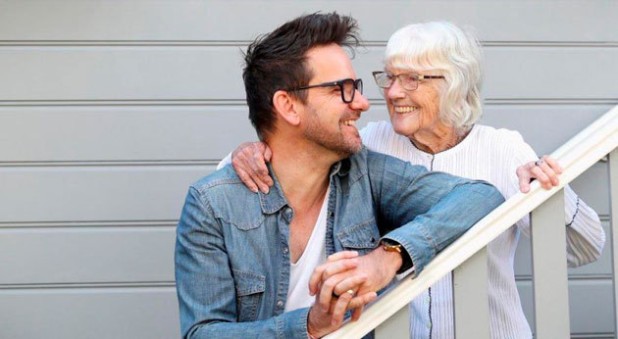Everybody’s Oma
Rated M
Some coarse language
Many of us would remember the Ruth Cracknell-Garry McDonald comedy Mother and Son, which ran on TV for a decade in the 1980s and ’90s. Cracknell’s character Maggie was in the early stages of dementia, which you wouldn’t have thought was funny, but the show provided a surprisingly welcome outlet of laughs for people caring for family members with the same condition.
Dementia is no laughing matter in real life, of course. It gradually sucks away memories, capacities – almost everything that makes them the person we know – and for the family watching and caring it is a great sorrow.
Everybody’s Oma documents the experience of the van Genderen family, who decided to care for Oma in their Central Coast home until it was no longer possible. Filmmaker Jason van Genderen had begun to take videos of his family 10 years earlier, when his father had terminal cancer. By the time his mother Hendrika was diagnosed with Alzheimer’s, having a camera around to chronicle the family’s experiences was a standard thing. So he just kept filming.
Oma is a kind, sweet-natured soul with a smile of pure sunshine and she is very much loved by all the family. Young grandson Artie is completely on board with the need to care for her, explaining to the camera that she has “Alsseimerses in her brain” and doesn’t always remember their names, or what day of the week it is, and can’t find her way around without help. So, when dad Jason asks Artie what Oma needs, he answers simply, “Us”.
They write letters with photos for Oma to receive in the mail – letters to remind her about the people she knows and loves. There are stories to share, trips to the beach and grandchildren to love and kiss. Jason takes her out for a date night, and she sings and laughs as they go, and beams at him across the restaurant table.
Then a video popped onto his “Oma’s Applesauce” Facebook page after the onset of COVID goes viral, with people around the world charmed by the family setting up a small supermarket in their house so Oma won’t forget how to shop while they are in lockdown.
Oma and her sunny smile become an unlikely media sensation. Millions of people begin to watch for updates on the Facebook page and share their own family experiences with Alzheimer’s.
This is all before the dementia really starts to bite hard, and when it does it’s simply heartbreaking. Yet it’s also incredibly important to watch. Jason van Genderen didn’t realise how precious his videos of everyday life would become, but not only do they provide lovely memories for his own family, they teach viewers so much.
We see how to engage with someone effectively when they have dementia, the importance of living each day well, the value of structure and inventiveness – and the physical, relational and emotional cost for each family member as the condition marches to its inevitable conclusion.
Everybody’s Oma isn’t always easy to watch. Dementia is a harsh and unforgiving illness. But the film has been made with tremendous love and joy, and that shines brightest in the hardest moments of worry and loss. Oma didn’t remember what was happening from day to day, which is bittersweet, but each day provided more ways for her family to remember her, and more ways for them to love her.
The final result is, in her own words, “beautiful”














